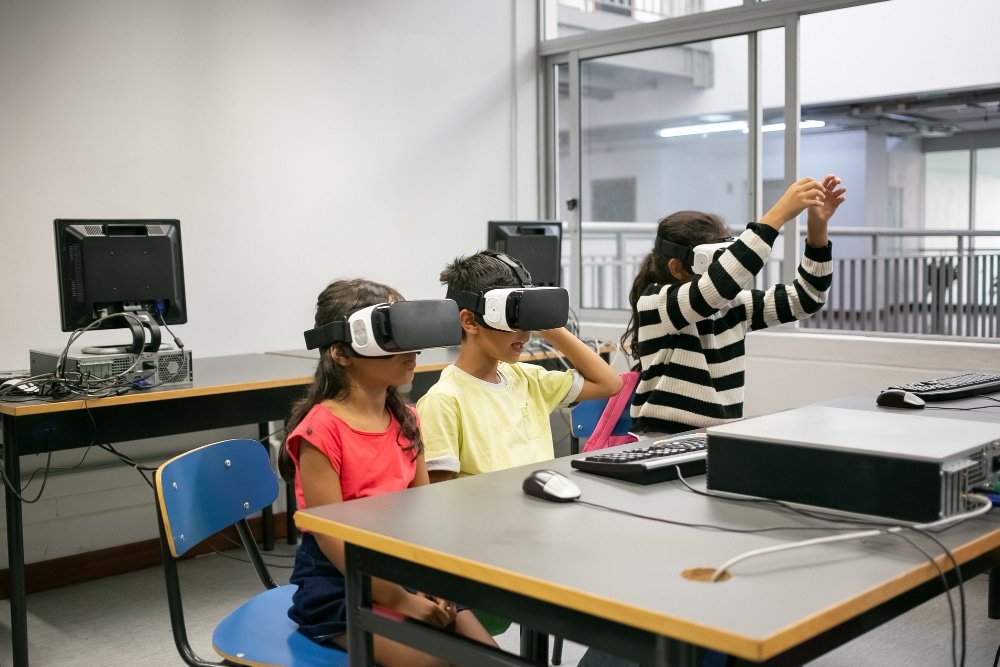Technology in education is regulating every sphere of life. What we learn and how we learn is all under the influence of technology. Digital tools have become part of our daily life, not least in the way we speak, work, and learn.
Some decades ago, learning used to be sitting in a classroom and using books and a teacher. And today, students have nothing but a device and internet access. They can learn at home, coffee shop or even when they are travelling.
This shift has transformed technology in education. It has created new opportunities for students and altered the role of teachers. The learning process today is very different as compared to what it was ten years ago. Teachers use digital resources to assist learners, and they revisit their courses to accommodate contemporary learning patterns.
In this article, we will now look at the ways that this is occurring.
From Individual to Collaborative Learning
Previously, learning was mostly individual and silent. Students would read books, take notes, and study by themselves. They were bound to go to school to attend the lectures regularly. But now, technology in the classroom encourages students to work together.
It is customary to have group conversations, common projects, and instant feedback in contemporary classrooms. Google Docs, Zoom, and digital whiteboards have made this collaboration possible. Learners living in the vicinity or even on another continent can just as well meet and study as a unit.
This kind of learning, or collaborative learning, became an essential element of contemporary learning. Technology in school assists one another by supporting them at school.
Active Learning Over Passive Listening
Technology in education has moved learners away from passive listening. Previously, students used to sit and take notes in silence. They desire more today. The learners anticipate participation, inquiry, and leading their learning.
Contemporary students can find answers, research, and apply learnings using phones, tablets, and laptops. They seek videos, articles, and interactive stuff that enable them to learn on a more personalised basis.
Teachers now play the role of guides and not providers. Rather than the lecture going on and on, they develop activities that give students a chance to examine and reason. Such a student-oriented approach is more interactive and makes students maintain their interest.
Applications, such as Kahoot or Quizizz, allow students to engage in live quizzes. Online labs and simulations assist science students in attempting experiments themselves. These are tools that make learning active.
Prowess like problem solving, decision making and thinking creatively are also to be attained through such active learning. These are important abilities for real-world success and are key reasons why technology in the classroom is so valuable today.
The Rise of Differentiated Instruction
Personalisation is one of the greatest capabilities of technology in education. No classroom has homogenized students with the same ability to comprehend and the same set of needs. One style of teaching does not suit everyone anymore.
Modern instructional design takes this into account. Through the use of technology, teachers can come up with learning materials that are different in skill levels and styles. Students have an option to learn as much as they can or learn at a pace of their choice, apart from the choice of the format: video, audio, or text.
Adaptive learning is provided on Khan Academy, Coursera, and most tools in school-based LMS. Such systems monitor the progress and recommend materials depending on the needs of individual students.
Technology in education will allow them to identify students who require any assistance and modify the lessons. Apps facilitate analysis of data and make decisions about planning in a better way, and provide direct support.
The goal of instructional design in this new setup is simple: make sure every student has a fair chance to succeed.
The Phenomenon of Multitasking
As much as there is benefit in the use of technologyin education, there are side effects. Distraction is one of the many. Students tend to go back and forth between applications, monitors, and activities. This behavior is known as multitasking, and it is difficult process to concentrate.
When reading an article, a student may also check social media or respond to messages. This distracts them and makes the learning process slow. Research has indicated that the brain is not capable of performing two complicated tasks simultaneously. Rather, it just switches back and forth, and this is what leads to errors and forgetfulness.
This is a growing concern for technology in schools, especially with younger students. The digital behaviors require teaching in schools, and these would include the ability to concentrate on one activity and switch off notifications when they are studying.
Teachers write online courses (lessons) where there are 2-3 minute resting periods, interesting activities, and interactive tests. These ensure that the students are not distracted as much as possible. Encouraging students to use tech responsibly is part of every modern instructional design.
Additional Posts:
Labubu: The Plush Toy That Became a Global Sensation
The Fantastic Four: A Look at the 2025 Movie and Its Impact on the MCU
Modi faces retirement pressure as BJP leadership crisis unfolds





